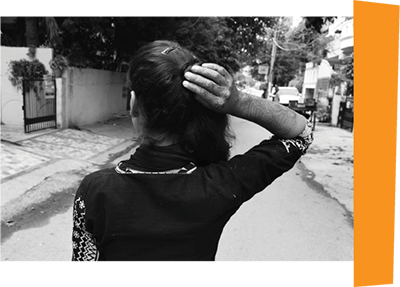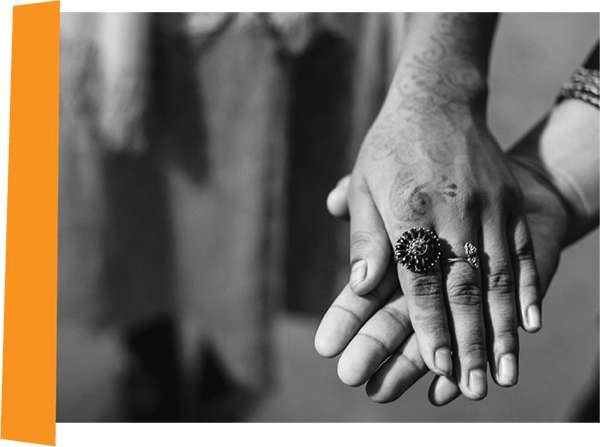
‘Child marriage’ in India refers to any marriage of girl below the age of 18 or the boy below the age of 21, which are the legally prescribed minimum ages of marriage. It refers to marriages where one or both parties are underage.

Context
Child marriage is an interconnected and complex issue influenced by poverty, access to quality education, resources, livelihood opportunities, localized status of girls, infrastructure and economic conditions. Studies have shown that districts that perform better on these macro socio-political indicators often report lower levels of early marriage. Inversely, under conditions of poverty and insecurity, communities often turn to early marriage as a means of reducing vulnerability even if reiterating gender inequalities. Thus, tackling child marriage needs a multi-pronged approach, targeting socio-economic conditions that create opportunities for girls within vulnerable communities, tackle social values as well as by enabling girls’ empowerment.
The national data (NHFS-4) which shows a decline in child marriage in the last decade (from 46% to 27% for women, and 29% to 20% for men) and an increase in the median age of marriage (from 17.2 years to 19 years for women, and from 22.6 to 24.5 years for men). Out of this 27% of women, 6.6% were married below 15 years, while as many as 20.2% were married between 15-17 years.

The level of girls’ education has the most profound impact on the age of marriage and childbirth, irrespective of household wealth, locality and other characteristics. Analysis of NFHS-4 reveals that “the level of teenage pregnancy decreases with an increasing level of schooling. Twenty percent of women aged 15-19 with no schooling have already begun childbearing, compared with only 4 percent of women who had 12 or more years of schooling.” A sharp drop in girls schooling is seen between 15-17 age group although girls and boys are largely equal between the ages of 6-10 in school attendance in rural areas. Education systems are unable to retain girls, particularly in the villages, leaving them more prone to early marriages and childbearing. Girls in 6-14 years range reportedly drop out of school for reasons of quality and a ordability of education, in addition to the having to bear the burden of unpaid housework. The right to education does not extend to Secondary education leaving girls older than 14 years more vulnerable to early marriage.

Law
The Prohibition of Child Marriage Act (2006) imposes penalties on adults involved in conducting the marriage, even as it treats the marriage as valid though voidable. The voidable feature gives underage parties the option of nullifying the marriage at any time within two years of attaining majority.
Marriages that involve kidnapping, enticement, trafficking or are conducted despite a legal injunction against them, are treated as totally invalid or void.
There are proposals to amend the national law to increase the age of marriage of girls to 21 years, and to declare all underage marriages void. Karnataka in 2018, followed by Haryana in 2020, have changed the law to rule all underage marriages to be void ab initio.

Challenges
The growing emphasis on legal solutions and stringent laws is troubling. Not only does this detract from tackling the root causes of early marriage: poverty, combined with lack of safety and guarantee of quality education for girls from resource poor backgrounds; it also does not consider the unintended harm of laws on adolescents.
Studies show that child marriage prosecutions are almost never led by girls, or the Child Marriage Prohibition Officer to stop or annul marriages. The law is primarily used by parents against elopements of daughters. Although not intended, the law is primarily used to prosecute self-initiated marriages, rather than forced or arranged marriages. Legal action against elopements often involve prosecutions of husbands for statutory rape or child sexual abuse. With the age of consent being 18 years, the law criminalizes all adolescent sexuality, including non-coercive consensual relations between peers. This makes husbands in what is known as ‘love’ cases vulnerable to a minimum sentence of 20 years, whereas adults, including parents punished under child marriage law face a fine or a maximum of 2 years. in this way, the law intended to protect rights of adolescent is weaponized to disproportionately harm them.
Increasing age of marriage to 21 for girls will extend parental controls and prosecutions over them, while denying them right to make personal decisions. Declaring child marriages void, as in Karnataka, does not prevent underage marriages. It renders girls in a position of de facto wives, who lack matrimonial rights or legal protection despite being in a marital union, while freeing husbands of legal consequences for re-marriage.

Recommendations and Resources
The underlying conditions for girls in contexts of poverty must change, to address not just the need for early marriage, but more importantly, the compulsory nature of marriage for women. Responses to child marriage need to focus on empowering girls, rather than their age of marriage. Channeling affirmative action in education and livelihood to girls from resource poor contexts, decriminalizing adolescent sexuality, make for enabling rather than punitive legal frameworks for young people.
Submissions
Submissions on the PCMA Amendment Bill, 2021
Civil Society Submissions to the State Level Committee Constituted to Draft the Uttar Pradesh Rules of Child Marriage Prohibition Act, 2006 (2021)
Submissions to the Task Force Set up to Examine Age of Motherhood and Related Issues, 2020
Memorandum to Task Force Set up to Examine Age of Motherhood and Related Issues, Multiple Organizations (2020)
Submissions To The Task Force Constituted To Examine Matters Pertaining To Age Of Motherhood Among Other Concerns, NCAAC (2020)
Submissions To The MWCD: In The Context Of Early Marriage And Age Of Consent, NCAAC (2020)
Submissions to the MWCD Pertaining to: Proposed Changes to PCMA And the POCSO, PLD (2019)
Reports
Child Marriage Prosecutions in India – Case Law Analysis of Actors, Motives and Outcomes 2008-2017, PLD (2021)
Young Women in Gujarat Ask: Whose Choice Should It Be?, ANANDI (2020)
The Battle for Justice Goes On: Voices of Married Girls in Telangana, MV Foundation (2018)
Prevention of Child Marriage: Impact on Girls, HAQ: Centre for Child Rights (2016)
Makkala Gram Swaraj, Concerned for Working Children, Namma Bhoomi and CWC (2013)
What About Us:The Study of Situation of Young Married Girls, Vikalp Sansthan, TISS and AJWS.
Strengthening Existing Systems for Prevention of Child Marriage, HAQ Centre for Child Rights, Jabala & MV Foundation
AudioVisual Media
Video: Empowering Adolescent Girls, HAQ Centre for Child Rights (2018)
Videos: I Will Prevail - 8 Stories of Assertion, HAQ Centre for Child Rights (2018)
Humko Kahni Apni Baat, Part 1, Vishakha (2015)
Humko Kahni Apni Baat, Part 2, Vishakha (2015)
Video: A Young Bride Fights Back, Breakthrough India (2013)
